Table of Contents
Although it may seem at first glance that the nutritional requirements of the male and female body are not particularly different, the opposite is true. In fact, the female body undergoes various physiological changes that the male body has no idea about. This is naturally reflected in its specific nutritional needs. For example, a higher risk of iron deficiency or a greater need for folic acid due to pregnancy are typically female nutritional requirements. Which other nutrients do women need in greater quantities, and why is this the case?
Why do the nutritional needs of the female body differ from those of the male body?
From birth, the female and male body have different nutritional requirements. This is particularly evident in the need for total daily energy intake, which is typically lower in women and girls than in men and boys. During growth and development, however, the differences become progressively more pronounced and the requirements for macronutrients (proteins, fats, carbohydrates) or micronutrients (vitamins, minerals) differ. A significant change occurs at puberty, when hormonal changes take place, which have a significant impact on energy and nutrient requirements.
Hormonal changes and physiological processes related to the reproductive system are responsible for the greatest differences. From a young age, a woman’s nutritional needs are already influenced by her menstrual cycle. Subsequently, there may be a period when she prepares for pregnancy, which also requires certain changes in the diet. Pregnancy itself then creates a whole new set of nutritional considerations that a woman should pay attention to if she wants to maintain good health and at the same time support the proper development of the foetus. Furthermore, the breastfeeding that may follow also has its typical requirements. And just when one would think enough is enough, along comes another significant intervention that shakes up the nutritional needs, and that is menopause. All of the periods that the female body goes through are characterised by something different, and women should be aware of these specific needs. [3]

Women have different needs for vitamins and minerals
Vitamins and minerals are nutrients that are essential for your bodies to function properly. These micronutrients are behind virtually all the processes that take place in the human body. Your task is to supply them to the body in optimal quantities through nutrition, because the body cannot produce them on its own.
One of the factors that influence the need for particular nutrients is gender. The aforementioned physiological changes that the female body undergoes are responsible for different nutritional needs. In addition, the nutritional requirements of the female body also change much more significantly over the course of life.
To make matters even more complicated, apart from gender, the need for nutrients is influenced by age, health status or the level of physical and sporting activity. The need for nutrients is also different, for example, for those women who are eating according to a certain alternative diet, such as vegetarianism and veganism. However, it is still possible to identify specific micronutrients which women are unable to gain via their diet and to which they are generally more sensitive. The levels of these vitamins and minerals in the body are ideally controlled with the help of a doctor and care is taken to ensure sufficient intake through a varied diet. If food is not sufficient or if recommended by your doctor, it is appropriate to seek dietary supplementation.

What food should women focus on in their diet?
In the following rows, we will describe the individual nutrients and also focus on their recommended daily intake. The recommended intake needs for the average healthy adult woman, including the period during pregnancy and breastfeeding, will be taken from the European Food Safety Authority (EFSA) and the German, Austrian and Swiss Nutrition Societies (DACH).
1. Sufficient energy
You should all be careful about receiving as much energy as your body needs for proper function and maintaining health. However, in the case of women, caloric intake is even more of a burning issue than in the case of men. In fact, the female body is more sensitive to energy shortages and low caloric intake can lead to specific problems.
You may have heard of energy availability. This represents the energy that remains after you subtract the energy expenditure during sport from your daily caloric intake. When the resulting figure is too low in the long term (< 30 kcal / kg body weight / day), this is referred to as low energy availability. [2]
At this time, the female body often reports danger by shutting down physiological processes that are not vital. Reproductive function disorders are therefore common and are manifested by disorders of the menstrual cycle or loss of menstruation. This problem is typical, for example, in the world of female sportswomen, who have high-intense performance with an emphasis on the aesthetic component, and are very often restricted in their diet. When menstrual dysfunction and low energy availability combine with low bone density, they form a complex problem, called the female athletic triad. It carries with it a range of health issues, including weakened immunity, chronic fatigue or a higher risk of injury. [2]
You can find out more about the topic of the female athletic triad in our article How to Fight the Loss of Menstruation and Other Symptoms of the Female Athletic Triad?
How much energy do women need?
The need for energy intake depends on a woman’s age, health condition or lifestyle and sports activity. The EFSA recommendation ranges from 1880 to 2680 kcal/day, with the lowest value for women with a sedentary lifestyle, while the highest may be suitable for athletes and very active women. However, caloric intake is very individual and should always be adapted to the current situation. If you need help with its calculation, you can use our online energy intake calculator. [15]
You might be interested in these products:
2. Folic acid
Folic acid, also known as vitamin B9, is a nutrient essential for the proper development of the human body. It plays an important role during pregnancy, when it contributes to the proper growth and development of the foetus. It is thus one of the more emphasised vitamins in relation to pregnancy. However, it is ideal to ensure its sufficient intake not only during this period, but in general during a woman’s reproductive age. Thanks to it, the body is better prepared for a possible pregnancy. Folic acid is also involved in normal blood formation or, for example, the proper function of the immune system. [30]
How does the lack of folic acid manifest itself?
The most serious manifestations of folic acid deficiency are related to the development of the foetus during pregnancy. A deficiency of this vitamin increases the risk of developing neural tube defects in the developing foetus. The neural tube is the foundation of the nervous system, from which the brain and spinal cord are formed. Its disorder can manifest itself, for example, with spina bifida. [30]
A low intake of this vitamin can also be manifested by anaemia, fatigue and a feeling of lack of energy or psychological problems. [40]
How much folic acid do women need daily?
EFSA recommendations:
- average adult female: 330 μg
- during pregnancy: 600 μg
- whilst breastfeeding: 500 μg [15]
DACH recommendations:
- average adult female: 300 μg
- during pregnancy: 550 μg
- whilst breastfeeding: 450 μg [10]
What are the sources of folic acid?
Plant foods are particularly rich in folic acid. Although a certain amount of the vitamin is found in almost all plant sources, the richest include legumes, leafy greens, oranges, grapefruit, peanuts and nuts. Folic acid can also be found in offal or yeast. [10]
Foods rich in folic acid
Food | Folic acid content (100g) |
|---|---|
| lentils | 479 μg |
| chickpeas | 557 μg |
| spinach | 194 μg |
| lettuce | 38 μg |
| rocket salad | 97 μg |
| oranges | 30 μg |
| peanuts | 240 μg |
| almonds | 44 μg |
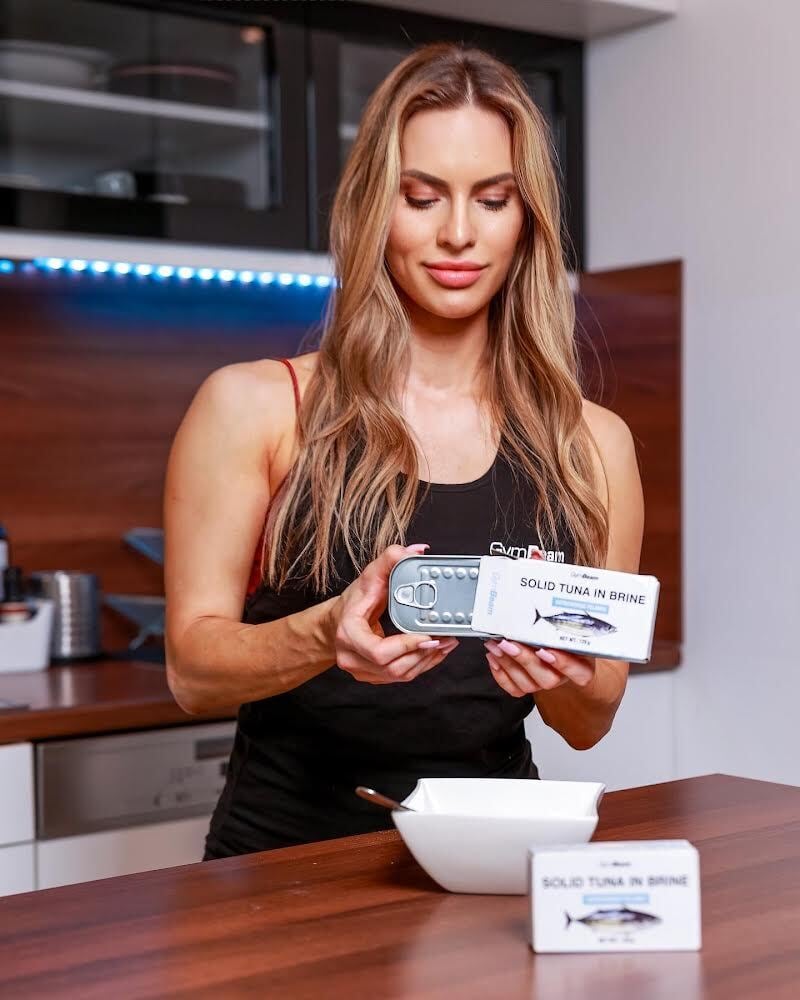
3. Iron
Iron has countless functions in the body. It is best known for its role in the formation of red blood cells and haemoglobin and as an aid in the transport of oxygen. In addition, however, it participates in the production of energy, helps to maintain normal cognitive functions and the proper function of the immune system.
At the same time, however, it is a nutrient whose deficit is generally very widespread, especially for women of reproductive age. Women commonly experience anaemia as iron is regularly lost in the blood during menstruation. If a woman repeatedly has severe bleeding, this can lead to a more pronounced iron deficiency.
How does an iron deficiency manifest?
A mild iron deficiency may not always manifest itself. You often discover it accidentally during blood tests. However, a larger deficit is associated with symptoms such as cold hands and feet, fatigue, pale skin or dizziness. It can also be manifested by shortness of breath, tachycardia (quickened heartbeat) or chest pain. [20,29]
How much iron does a woman need daily?
EFSA recommendations:
- average adult female prior to menopause: 16 mg
- average adult female during menopause: 11 mg
- during pregnancy: 16 mg
- whilst breastfeeding: 16 mg [15]
DACH recommendations:
- average adult female: 15 mg
- during pregnancy: 30 mg
- whilst breastfeeding: 20 mg [12]
What are the sources of iron?
Many foods of both animal and plant origin are rich in iron. The main animal sources are meat, offal and eggs. From plants, legumes, oats, chocolate or nuts and seeds are the richest in iron.
Animal foods rich in iron
Food | Iron content (100g) |
|---|---|
| roast pork | 6.6 mg |
| beef | 2.2 mg |
| pork | 0.9 mg |
| egg yolk | 2.7 mg |
Plant foods rich in iron
Food | Iron content (100g) |
|---|---|
| sunflower seeds | 3 mg |
| dark chocolate | 11.9 mg |
| almonds | 3.7 mg |
| oat flakes | 4.3 mg |
| peas | 4.7 mg |
| lentils | 13 mg |
| spinach | 2.7 mg |
However, you cannot consider plant and animal sources as equal. The so-called non-heme iron in plant foods is less available to the body than heme iron in animal sources. Whilst you get about 15 – 35% of iron from animal foods, it is only about 5 – 12% from plant foods. When a woman cannot meet a sufficient intake of iron in the form of food, it is advisable to consider an intake of nutritional supplements. [6,17]
However, you can support the absorption of non-heme iron, for example by combining it with vitamin C or animal proteins. [12]
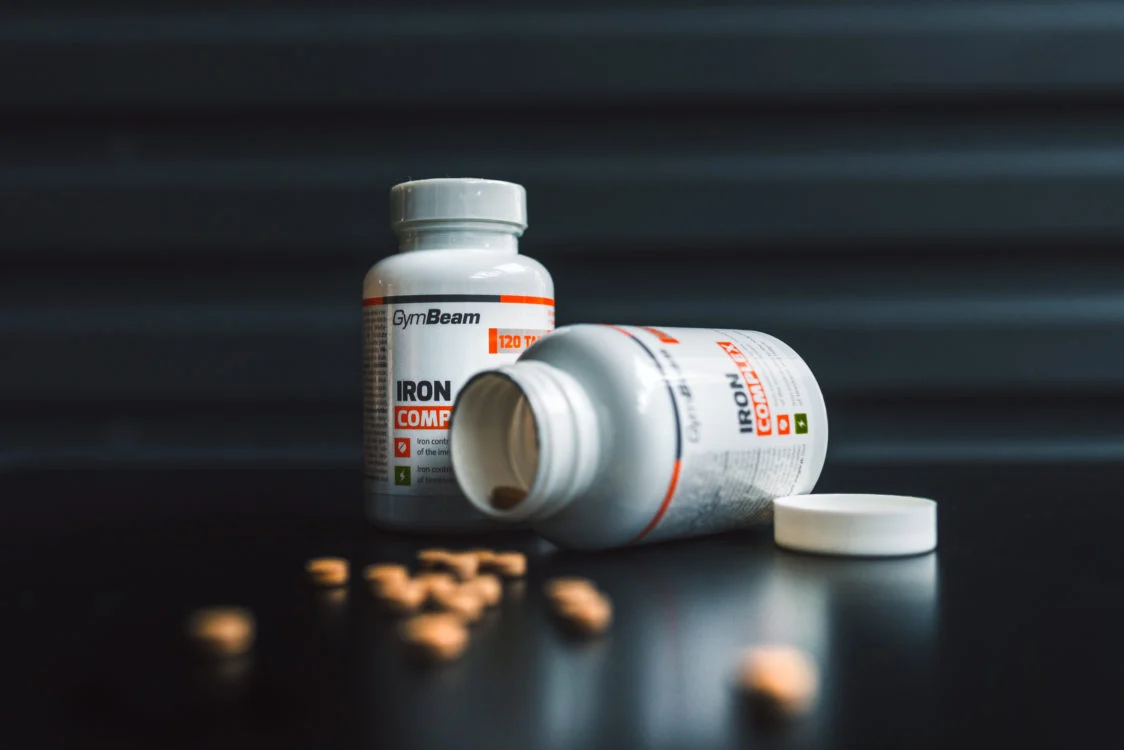
4. Calcium
You need calcium for the health of your bones and teeth, but it is also essential for the proper transmission of nerve impulses or muscle contraction. However, this generally known function in bone metabolism is the main reason why calcium is specific for women’s health. Women have a higher risk of osteoporosis compared to men, due to the hormonal changes that occur during menopause (a lower level of oestrogen promotes bone thinning). [1,26,31]
According to research, in Europe in 2019, the incidence of osteoporosis was four times higher in women compared to men. While 6.6% of men over 50 suffered from osteoporosis, it was up to 22.6% of women in the same age group. Sufficient intake of calcium is therefore very important for women to maintain high-quality bone mass. You should not forget that it is advisable to start building reserves as soon as possible, because the peak amount of bone mass occurs for most people between the ages of 25 and 30. [1,19,26,30]
Interestingly, scientists also link calcium with premenstrual syndrome (PMS). This is because women seem to have lower blood calcium levels before menstruation. This is also supported by the effect of oestrogen, the level of which is higher during this period of the cycle. Oestrogen supports the deposit of calcium in the bones, but due to its low level in the blood, it probably changes the activity of serotonin, which affects mood. Fluctuations in oestrogen and calcium levels can also be associated with mood swings typical of PMS. [1,25]
How does a calcium deficiency manifest?
Calcium deficiency can manifest itself in various symptoms spread throughout the body. You may see splitting nails, hair loss or fragile skin. A more serious deficit can be manifested, for example, by muscle spasms, disturbances in heart activity or cognitive disorders. [16]
How much calcium do women need daily?
EFSA recommendations:
- average adult female: 950 – 1000 mg
- during pregnancy: 950 – 1000 mg
- whilst breastfeeding: 950 – 1000 mg [8,15]
DACH recommendations:
- average adult female: 1000 mg
- during pregnancy: 1000 mg
- whilst breastfeeding: 1000 mg [8]
What are the sources of calcium?
Plant and animal foods are rich in calcium. However, animal sources are considered a better source because calcium is better absorbed from them. Unlike plant foods, they do not contain oxalates, phytic acid and other substances that reduce the absorption of calcium. While about 5% of calcium is absorbed from plant sources, you get about 30% from animal sources. [6,33]
Animal foods rich in calcium
Dairy products, sardines and eggs are the best animal sources for calcium.
Food | Calcium content (100 g) |
|---|---|
| 30% edam cheese | 730 mg |
| sardines | 382 mg |
| white yoghurt 3% | 183 mg |
| egg yolk | 129 mg |
| milk | 123 mg |
Plant foods rich in calcium
The best plant sources are poppy seeds, nuts and seeds and brassica vegetables (kale, broccoli, cauliflower, kohlrabi, etc.).
Food | Calcium content (100 g) |
|---|---|
| poppy seeds | 1440 mg |
| almonds | 269 mg |
| cabbage | 40 mg |
| spinach | 99 mg |
| broccoli | 47 mg |
You can also get calcium from foods that are enriched (fortified) with it. You will often find it added, for example, in plant-based drinks (almond, soy and other plant-based milk), breakfast cereals or fruit juice. However, if natural food sources or foods enriched with calcium are not enough to fulfil its sufficient intake, you can also obtain it from a nutritional supplement.
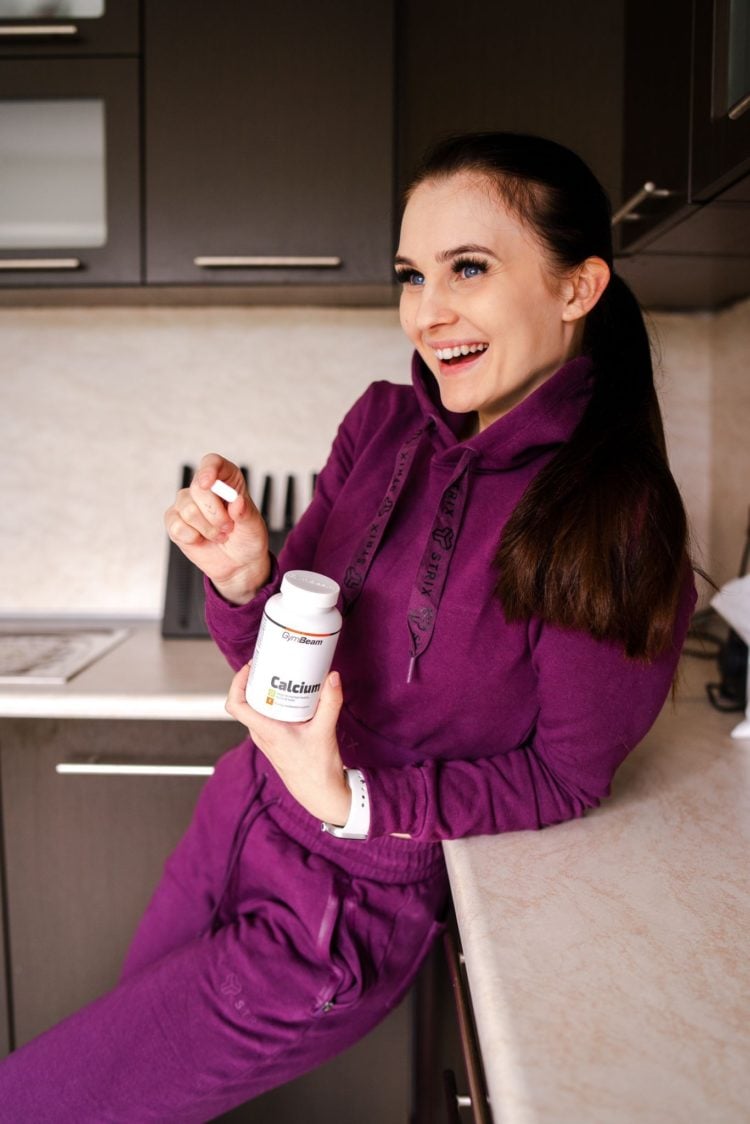
5. Vitamin D
Vitamin D has countless functions in the body. It is involved in the function of the immune system, the normal function of the thyroid gland and muscles. In addition, however, it is a very important part of bone health, as it participates in the optimal absorption and utilisation of calcium and phosphorus. Like the aforementioned calcium, it is especially important for women because of their higher risk of developing osteoporosis. [30]
How does a vitamin D deficiency manifest?
There are quite a few symptoms associated with vitamin D deficiency. It can be manifested by weakened bones, a less efficient immune system and greater susceptibility to infections or, for example, fatigue and weakness. This deficit can be related to poorer regeneration and healing of wounds, as well as to impaired sleep quality.
How much vitamin D do women need daily?
EFSA recommendations:
- average adult female: 15 μg
- during pregnancy: 15 μg
- whilst breastfeeding: 15 μg [15]
DACH recommendations:
- average adult female: 20 μg
- during pregnancy: 20 μg
- whilst breastfeeding: 20 μg [7]
What are the sources vitamin D?
The main source of vitamin D is sunlight. Of the foods, fatty sea fish, fish oil, offal (especially roast) and egg yolk stand out with their content. It can also be found in fungi and lichens, where it is produced by the action of UVB radiation.
Foods rich in vitamin D
Food | Vitamin D content (100g) |
|---|---|
| salmon | 11 μg |
| mackerel | 16 μg |
| herring | 4.2 μg |
| egg yolk | 5.4 μg |
However, other foods are vitamin D poor. Due to this, as well as the short period when we are blessed with sunny weather, it is quite difficult to meet the daily need for this vitamin. Therefore, it is usually advantageous to supplement it in the form of a nutritional supplement. If vitamin D deficiency is accompanied by calcium deficiency, it may be advisable to supplement them together and thus support bone metabolism more so. Even vegans won’t have a problem with supplementation, as in this day and age there are nutritional supplements with well-absorbed plant-based vitamin D. [7]
Our article will explain to you more about the importance of vitamin D – Vitamin D: Why Is It So Important, What Causes a Deficiency and How to Supplement It?

6. Omega-3 fatty acids
Omega-3 fatty acids are polyunsaturated fatty acids that are part of fat and are associated with many health benefits.
These healthy fats, specifically alpha-linolenic acid, help maintain normal cholesterol levels and thus have a positive effect on cardiovascular health. [30]
Long-chain omega-3 fatty acids EPA and DHA not only affect the heart but also the health of the eyes and brain. Furthermore, they can contribute to the health of the skin or, the function of the immune system. [30]
For women, omega-3 fatty acids are additionally important because of their relationship to pregnancy or gynaecological problems. Studies indicate that omega-3 could have a positive effect on the risk of developing endometriosis or breast cancer. [5,18,22,27,28]
At the same time, during pregnancy they could play a role in preventing premature birth and apparently have a positive effect on the development of the foetal nervous system. [5,18,22,27,28]
How much omega-3 do women need daily?
EFSA recommendations:
- the average adult female:
- 250 mg EPA + DHA
- ALA intake should account for 0.5% of total energy intake (TEI)
- during pregnancy:
- 250 mg EPA + DHA increased by an additional 100 – 200 mg DHA
- ALA intake should account for 0.5% TEI
- during breastfeeding:
- 250 mg EPA + DHA increased by an additional 100 – 200 mg DHA
- ALA intake should account for 0.5% TEI [14]
DACH recommendations:
- In the average adult woman, as well as during pregnancy and breast-feeding, ALA intake should be 0.5% of TEI,
- no recommendations exist for the for intake of EPA and DHA [31]
Where can you find omega-3?
Alpha-linolenic acid (ALA), which is essential for your body and you need to get it from food, can be found most abundantly in flax seeds, linseed oil, rapeseed oil, walnuts, soy or, chia seeds. EPA and DHA are partially formed from ALA, but the proportion of this conversion is relatively small. Only about 5% is converted to EPA and less than 0.5% to DHA. In order to reap their benefits, it is so important to obtain them from other sources as well.
In food, they are most represented in fatty sea fish (salmon, mackerel, herring, etc.) and fish fat. Seaweed is also a plant source. However, due to the small amount of food sources, it is quite difficult to fulfil their recommended daily requirement. Therefore, it may be advisable to supplement them in the form of a nutritional supplement, either from fish oil or, for example, seaweed, which is also suitable for vegans. [21,36]
More comprehensive information about omega-3 fatty acids can be found in our article Omega-3 Fatty Acids: Are You Consuming Enough and in the Right Proportion to Omega-6?
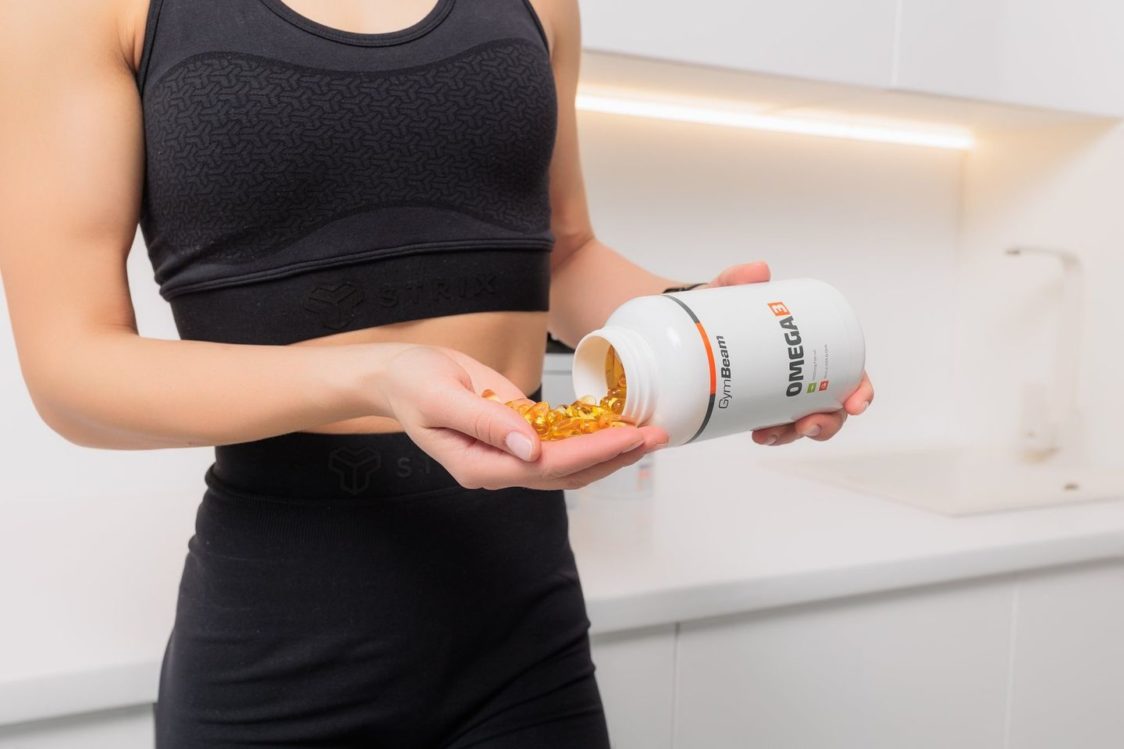
7. Iodine
Iodine is essential for many processes in the body, such as normal thyroid function and thyroid hormone production. At the same time, it is important for maintaining the metabolism of energy or the normal functioning of the nervous system. [30]
Iodine is also one of the minerals most often mentioned in connection with a healthy pregnancy. This mineral is essential for the proper development of the foetus’s brain. With iodine deficiency during pregnancy, there is a risk of various disorders of the nervous system. Its deficiency can also cause so-called foetal hypothyroidism and damage the cognitive development of the foetus. It is for this reason that the WHO (World Health Organisation) and UNICEF have proposed the iodisation of table salt, which helps prevent these problems. However, salt iodisation is not mandatory in all European countries, so even today you can encounter a deficit. [37]
How does an iodine deficiency manifest?
Symptoms of iodine deficiency are most common in children and pregnant women. Deficiency can be manifested by hypothyroidism, i.e. reduced function of the thyroid gland. If iodine is lacking during pregnancy, it can lead to a greater chance of miscarriage. In children, iodine deficiency can subsequently manifest itself as, mental retardation. [11]
How much iodine do women need daily?
EFSA recommendations:
- average adult female: 150 μg
- during pregnancy: 200 μg
- whilst breastfeeding: 200 μg [15]
DACH recommendations:
- average adult female: 150 – 200 μg (150 -180 μg for women over 50 years old)
- during pregnancy: 200 – 230 μg
- whilst breastfeeding: 200 – 260 μg [11]
What are the sources of iodine?
The main sources of iodine are fish, seafood, eggs, milk and milk products and iodised table salt. When the intake of iodine from the diet is not enough, you can turn to a nutritional supplement. However, it is advisable to find out what the level of iodine in your body is and to consult a doctor about possible supplementation. An overdose of iodine has unpleasant health consequences. [11]
Foods rich in iodine
Food | Iodine content (100g) |
|---|---|
| salmon | 14 μg |
| tinned tuna | 12 μg |
| eggs | 50 μg |
| cheese | 15 μg |
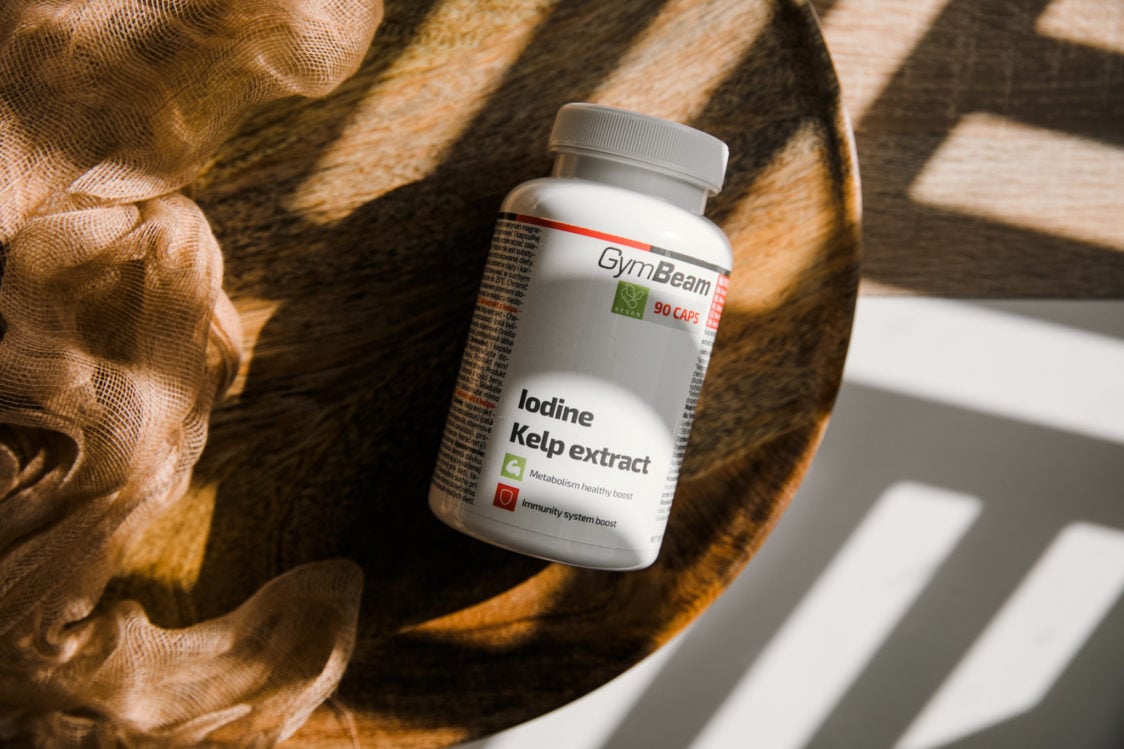
8. Vitamin B12
You need vitamin B12 for the proper formation of red blood cells, optimal energy metabolism, and normal function of the immune system. It plays an important role in cell division, DNA formation and the function of the nervous system. Women should not neglect its intake during pregnancy, as it significantly contributes to the optimal development of the foetus. [30,35]
How does a vitamin B12 deficiency manifest?
A deficiency of vitamin B12 may not manifest itself immediately, but rather after several years, since your body has stored reserves in the liver. Over time, it can manifest itself as anaemia, fatigue, pallor, neurological problems such as numbness, etc. If there is insufficient intake of vitamin B12 during pregnancy, there is a higher risk of delayed development or neurological problems in the child. [35]
How much vitamin B12 do women need daily?
EFSA recommendations:
- average adult female: 4 μg
- during pregnancy: 4.5 μg
- whilst breastfeeding: 5 μg [15]
DACH recommendations:
- average adult female: 4 μg
- during pregnancy: 4.5 μg
- whilst breastfeeding: 5.5 μg [38]
What are the sources of vitamin B12?
This vitamin is specific in that it is found almost exclusively in animal foods. Its main sources are meat, fish, eggs, offal and dairy products. From plant foods, it can be found in seaweed and mushrooms grown in soil with a high vitamin B12 content. Fermented foods that contain vitamin B12 are an interesting source because it is formed by bacteria. [9]
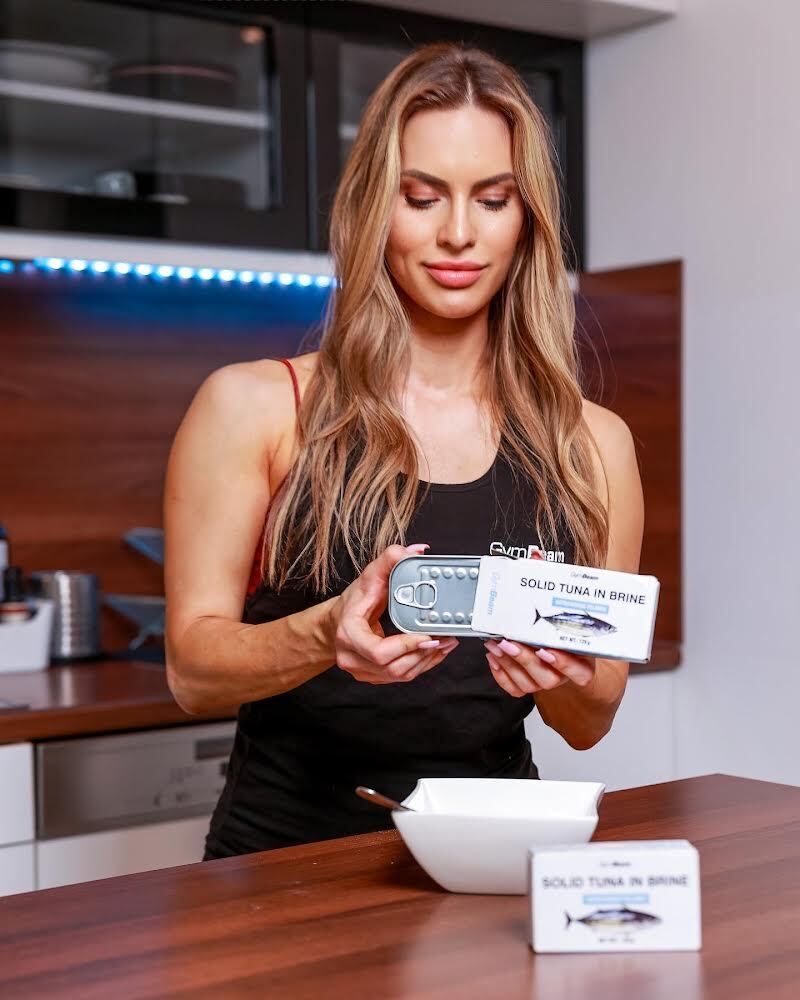
9. Magnesium
Magnesium is a mineral necessary for the activity of more than 300 enzymes in the human body. Enzymes speed up biochemical reactions in the body, and magnesium specifically participates, for example, in the formation of proteins or energy metabolism. You also need it for the normal functioning of the nervous system, muscles and for optimal mental activity. [30,34]
Many will recognise magnesium as a nutrient recommended for cramping. However, its possible effect can be used not only by athletes, but also by women of reproductive age. Magnesium most likely helps reduce the occurrence of cramps during menstruation. In addition, it seems that it can be a good helper during PMS, when it probably helps to reduce fatigue, irritability, mood swings and other symptoms typical of PMS. [23]
How does a magnesium deficiency manifest?
Symptoms of magnesium deficiency can vary. It can manifest itself, for example, in the aforementioned muscle cramps, fatigue or sleep problems. It can also be related to irritability or heart problems.
How much magnesium do women need daily?
EFSA recommendations:
- average adult female: 300 mg
- during pregnancy: 300 mg
- whilst breastfeeding: 300 mg [15]
DACH recommendations:
- average adult female: 300 – 310 mg
- during pregnancy: 300 mg
- whilst breastfeeding: 300 mg [13]
What are the sources of magnesium?
This mineral substance is relatively abundant in food. Its main sources are plant foods, especially whole grain products, oatmeal, legumes, nuts and seeds, and leafy greens. From animal sources, it can be found mostly in fish and seafood. Mineral waters with magnesium content can also be a great source. If the intake of magnesium from the diet is not enough, you can help by taking a nutritional supplement. [13,34]
Food rich in magnesium and content values
Food | Magnesium content (100g) |
|---|---|
| sunflower seeds | 325 mg |
| cashew nuts | 292 mg |
| 70 – 85% dark chocolate | 228 mg |
| buckwheat | 231 mg |
| peanuts | 168 mg |
| oat flakes | 138 mg |
| lentils | 47 mg |
| tuna | 35 mg |
| spinach | 79 mg |
You can read more about magnesium in our article Cramps, Fatigue, Irritability or Sleep. What Else Does Magnesium Affect?

10. Beauty nutrients and substances for beautiful hair, nails or skin
Women generally care more about how their body looks. They pay attention to their intake of nutrients that support the health of their hair, nails or skin. Which specific nutrients can help with this?

- Selenium is a mineral substance with proven antioxidant effects. Thanks to this, it is an important part of a functional immune system and protects against many diseases. In addition, however, it is also valued for maintaining a healthy appearance, as it helps maintain the health of the hair and nails. [30]
- Hyaluronic acid is naturally found in many tissues, such as cartilage, hair or skin. This is also why it is used as part of nutritional supplements that aim to reduce the appearance of wrinkles, prevent drying of the skin and its overall health. Its role is to retain water in the cells, thanks to which the skin appears more hydrated and fresher. [39]
- Collagen is a protein that is a natural part of articular cartilage. That is also why it is used as part of joint nutrition. However, its other benefit is that it also has a positive effect on the health of the skin, because it is the most represented protein in connective tissue, which includes the skin. [24]
- Biotin, also called vitamin B7, is an important part of energy metabolism, the activity of the nervous system or the metabolism of carbohydrates, fats and proteins. However, it is also worth mentioning its possible effect on the health of hair, nails and skin. That is why it is important to ensure its sufficient intake, for example in the case of hair loss or in an attempt to slow down the development of wrinkles. [30]
- Complex nutritional supplements: you often need a combination of substances to achieve the desired effect on health or appearance. It is these substances that you can focus on to take care of your hair, skin or overall healthy appearance.
What should you remember?
The female body has its own specific needs, which are mainly related to typical hormonal changes and reproductive health. Certain vitamins and minerals, such as iron, folic acid, calcium and iodine, are particularly important for the female body. When a woman wants to ensure good health or, for example, prepare for a smooth pregnancy or fewer health problems in old age, the body’s nutritional requirements should not be ignored. The core is a varied and high-quality diet, and if this is not enough, it is advantageous to help yourself with suitable nutritional supplements.
If you are interested in this article and you have women around you who will also appreciate this information, feel free to share these tips on how to take better care of the health.
[1] ARAB, A. et al. Beneficial Role of Calcium in Premenstrual Syndrome: A Systematic Review of Current Literature. – https://www.ncbi.nlm.nih.gov/pmc/articles/PMC7716601/
[2] ARETA, J.L. et al. Low energy availability: history, definition and evidence of its endocrine, metabolic and physiological effects in prospective studies in females and males. – https://pubmed.ncbi.nlm.nih.gov/33095376/
[3] BAILEY, R.L. et al. Sex Differences Across the Life Course: A Focus On Unique Nutritional and Health Considerations among Women. – https://pubmed.ncbi.nlm.nih.gov/35294009/
[4] BDA Iodine Food fact Sheet. – https://www.bda.uk.com/resource/iodine.html
[5] BEST, K.P. et al. ISSFAL statement number 7 – Omega-3 fatty acids during pregnancy to reduce preterm birth. – https://www.plefa.com/article/S0952-3278(22)00107-7/fulltext
[6] DUYFF, R.L. Complete Food & Nutrition Guide. . New York: Academy of Nutrition and Dietetics, 2017. ISBN 978-0-544-52058-5.
[7] EFSA PANEL ON DIETETIC PRODUCTS, NUTRITION AND ALLERGIES (NDA) Dietary reference values for vitamin D. – https://onlinelibrary.wiley.com/doi/abs/10.2903/j.efsa.2016.4547
[8] EFSA PANEL ON DIETETIC PRODUCTS, NUTRITION AND ALLERGIES (NDA) Scientific Opinion on Dietary Reference Values for calcium. – https://onlinelibrary.wiley.com/doi/abs/10.2903/j.efsa.2015.4101
[9] EFSA PANEL ON DIETETIC PRODUCTS, NUTRITION, AND ALLERGIES (NDA) Scientific Opinion on Dietary Reference Values for cobalamin (vitamin B12). – https://onlinelibrary.wiley.com/doi/abs/10.2903/j.efsa.2015.4150
[10] EFSA PANEL ON DIETETIC PRODUCTS, NUTRITION AND ALLERGIES (NDA) Scientific Opinion on Dietary Reference Values for folate. – https://onlinelibrary.wiley.com/doi/abs/10.2903/j.efsa.2014.3893
[11] EFSA PANEL ON DIETETIC PRODUCTS, NUTRITION AND ALLERGIES (NDA) Scientific Opinion on Dietary Reference Values for iodine. – https://onlinelibrary.wiley.com/doi/abs/10.2903/j.efsa.2014.3660
[12] EFSA PANEL ON DIETETIC PRODUCTS, NUTRITION AND ALLERGIES (NDA) Scientific Opinion on Dietary Reference Values for iron. – https://onlinelibrary.wiley.com/doi/abs/10.2903/j.efsa.2015.4254
[13] EFSA PANEL ON DIETETIC PRODUCTS, NUTRITION AND ALLERGIES (NDA) Scientific Opinion on Dietary Reference Values for magnesium. – https://onlinelibrary.wiley.com/doi/abs/10.2903/j.efsa.2015.4186
[14] EFSA PANEL ON DIETETIC PRODUCTS, NUTRITION AND ALLERGIES (NDA) Scientific Opinion on the Tolerable Upper Intake Level of eicosapentaenoic acid (EPA), docosahexaenoic acid (DHA) and docosapentaenoic acid (DPA). – https://onlinelibrary.wiley.com/doi/abs/10.2903/j.efsa.2012.2815
[15] EUROPEAN FOOD SAFETY AUTHORITY Dietary Reference Values | DRV Finder. – https://www.efsa.europa.eu/en/interactive-pages/drvs
[16] FONG, J. - KHAN, A. Hypocalcemia. – https://www.ncbi.nlm.nih.gov/pmc/articles/PMC3279267/
[17] HURRELL, R. - EGLI, I. Iron bioavailability and dietary reference values. – https://pubmed.ncbi.nlm.nih.gov/20200263/
[18] CHOWDHURY, M.H. et al. Effect of supplementary omega-3 fatty acids on pregnant women with complications and pregnancy outcomes: review from literature. – https://pubmed.ncbi.nlm.nih.gov/32643471/
[19] KANIS, J.A. et al. SCOPE 2021: a new scorecard for osteoporosis in Europe. – https://www.ncbi.nlm.nih.gov/pmc/articles/PMC8172408/
[20] KUMAR, A. et al. Iron deficiency anaemia: pathophysiology, assessment, practical management. – https://www.ncbi.nlm.nih.gov/pmc/articles/PMC8744124/
[21] LANE, K. et al. Bioavailability and potential uses of vegetarian sources of omega-3 fatty acids: a review of the literature. – https://pubmed.ncbi.nlm.nih.gov/24261532/
[22] MIDDLETON, P. et al. Omega‐3 fatty acid addition during pregnancy. – https://www.ncbi.nlm.nih.gov/pmc/articles/PMC6516961/
[23] PARAZZINI, F. et al. Magnesium in the gynecological practice: a literature review. – https://pubmed.ncbi.nlm.nih.gov/28392498/
[24] PFIFFNER, M. Type-II Collagen Research Analysis. – https://examine.com/supplements/type-ii-collagen/
[25] SHOBEIRI, F. et al. Effect of calcium on premenstrual syndrome: A double-blind randomized clinical trial. – https://www.ncbi.nlm.nih.gov/pmc/articles/PMC5313351/
[26] SULLIVAN, S.D. et al. Age of Menopause and Fracture Risk in Post-Menopausal Women Randomized to Calcium + Vitamin D, Hormone Therapy, or the combination: Results from the Women’s Health Initiative Clinical Trials. – https://www.ncbi.nlm.nih.gov/pmc/articles/PMC5365363/
[27] THEINEL, M.H. et al. The Effects of Omega-3 Polyunsaturated Fatty Acids on Breast Cancer as a Preventive Measure or as an Adjunct to Conventional Treatments. – https://www.ncbi.nlm.nih.gov/pmc/articles/PMC10052714/
[28] YALÇIN BAHAT, P. et al. Dietary supplements for treatment of endometriosis: A review. – https://www.ncbi.nlm.nih.gov/pmc/articles/PMC8972862/
[29] Anemia - Iron-Deficiency Anemia | NHLBI, NIH. – https://www.nhlbi.nih.gov/health/anemia/iron-deficiency-anemia
[30] EU Register of nutrition and health claims made on foods (v.3.6). – https://ec.europa.eu/food/safety/labelling_nutrition/claims/register/public/?event=search
[31] Fett, essenzielle Fettsäuren. – https://www.dge.de/wissenschaft/referenzwerte/fett/?L=0
[32] FoodData Central. – https://fdc.nal.usda.gov/fdc-app.html#/food-details/321360/nutrients
[33] Office of Dietary Supplements - Calcium. – https://ods.od.nih.gov/factsheets/Calcium-HealthProfessional/
[34] Office of Dietary Supplements - Magnesium. – https://ods.od.nih.gov/factsheets/Magnesium-HealthProfessional/
[35] Office of Dietary Supplements - Vitamin B12. – https://ods.od.nih.gov/factsheets/VitaminB12-HealthProfessional/
[36] Omega-3 fatty acids: where to find them? – https://www.eufic.org/en/whats-in-food/article/omega-3-fatty-acids-where-to-find-them
[37] Reaching optimal iodine nutrition in Pregnant and Lactating Women and Young Children. – https://www.who.int/publications/m/item/WHO-statement-IDD-pregnantwomen-children
[38] Referenzwerte für die Nährstoffzufuhr. – https://www.dge.de/wissenschaft/referenzwerte/?L=0
[39] The effects of oral hyaluronic acid on wrinkles and skin dryness - Study Summary - Examine. – https://examine.com/summaries/study/968ey1/
[40] Vitamin B12 or folate deficiency anaemia. – https://www.nhs.uk/conditions/vitamin-b12-or-folate-deficiency-anaemia/


Add a comment